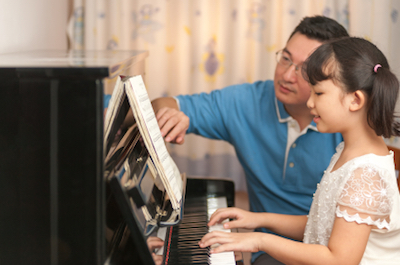Every day, we assign ourselves different roles in what we do. We may label ourselves by who we are – accountant, doctor, lawyer – or a role we play – mother, sister, daughter. We also set ourselves up for failure by action words we’ve assigned ourselves over time. Ever been told (or considered yourself) a slow learner or a bad performer? Are you unmusical or someone who can’t sit still for normal practice routines?
 We receive labels throughout our lives. They start in our own families from a very early age. They often are introduced to new areas before we ever begin. If you tell a piano teacher before the first class that your child is highly disorganized and a slow learner, the labeling has already begun. And in most cases, these labels are self-fulfilling at best.
We receive labels throughout our lives. They start in our own families from a very early age. They often are introduced to new areas before we ever begin. If you tell a piano teacher before the first class that your child is highly disorganized and a slow learner, the labeling has already begun. And in most cases, these labels are self-fulfilling at best.
It takes practice to release ourselves from labeling. It takes changing things up and looking at everything you do in a slightly different manner. Here are some strategies you can use:
Paint a new picture
Put a child in an environment where they can thrive and build confidence along the way. If they aren’t good at performing in public, ease into it slowly. Allow them to play duets to have a friendly set of hands alongside them. Create a low pressure situation – one with family only.
Let them see their abilities differently
Change up how you approach new things. If someone is classified as a slow learner, introduce things in more chunkable ways. Instead of introducing new pieces, give sections to learn instead. This way a child can accomplish things at a much quicker pace, and develop more confidence early on.
Model behavior
Children often become bored with certain aspects of playing. Acknowledge it, but also demonstrate and show them how experience can pay off. Show them how slowing practice sessions can help them achieve greater proficiency, making it more enjoyable to play when their focus is on the details.
Accumulate special moments
Students will achieve different results over time. In some cases, it’s easy to forget all you achieve. Build up processes and help students see all they have achieved. It can help motivate them to put in more effort on more difficult tasks, knowing the results are more than possible.
Have you categorized the way you play? Have you labeled your child or your student in specific ways? How can you change them at your next practice session?

